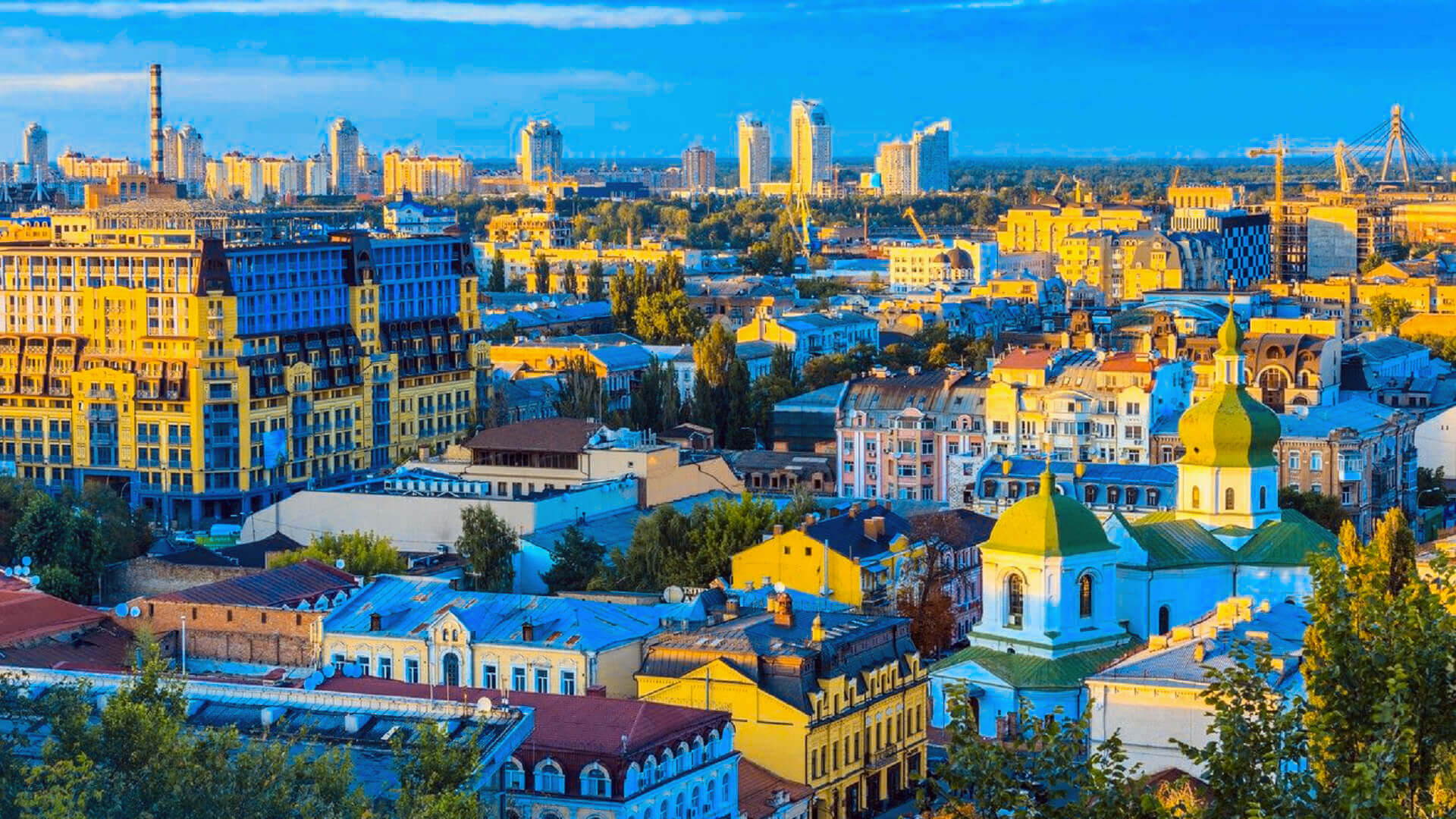[lwptoc]
Ukraine is a sovereign state in Eastern Europe, bounded on the east and northeast by Russia, on the northwest by Belarus, on the west by Poland and Slovakia, on the southwest by Hungary, Romania, and Moldova, and on the south and southeast by the Black Sea and the Sea of Azov. Ukraine and Russia are presently engaged in a territorial dispute over the Crimean Peninsula, which Russia seized in 2014 but which Ukraine and the majority of the international community see as Ukrainian. Ukraine’s total size, including Crimea, is 603,628 km2 (233,062 sq mi), making it the biggest nation completely inside Europe and the 46th largest in the world. It has a population of about 44.5 million, making it the world’s 32nd most populated nation.
Since 32,000 BC, the present Ukrainian region has been populated. Throughout the Middle Ages, the region was a vital center of East Slavic culture, with the strong kingdom of Kievan Rus’ serving as the foundation for Ukrainian identity. Following the territory’s disintegration in the 13th century, it was disputed, controlled, and partitioned by a number of countries, including Lithuania, Poland, the Ottoman Empire, Austria-Hungary, and Russia. During the 17th and 18th centuries, a Cossack republic developed and flourished, but its territory was ultimately divided between Poland and the Russian Empire, and finally absorbed entirely by Russia. During the twentieth century, two short periods of independence occurred, one at the conclusion of World War I and another during World War II. However, both instances resulted in the consolidation of Ukraine’s borders into a Soviet republic, a position that lasted until 1991, when Ukraine achieved independence from the Soviet Union after the Cold War’s conclusion. Prior to independence, Ukraine was often referred to in English as “The Ukraine,” but sources have subsequently moved to exclude the prefix “the” from all usage of the term.
Ukraine proclaimed itself a neutral state after independence. Nonetheless, in 1994, it established a limited military cooperation with the Russian Federation and other Commonwealth of Independent States (CIS) nations, as well as a collaboration with NATO. In the 2000s, the government started to gravitate toward NATO, and the NATO-Ukraine Action Plan signed in 2002 laid the groundwork for further collaboration with the alliance. Later, it was agreed that the issue of NATO membership should be decided by a public vote at some time in the future. Former President Viktor Yanukovych deemed the existing level of cooperation between Ukraine and NATO adequate and opposed Ukraine’s membership in NATO. Protests against President Yanukovych’s administration erupted in downtown Kiev in 2013, after the government’s decision to suspend the Ukraine-European Union Association Agreement in favor of stronger economic relations with Russia. This sparked a several-month-long wave of rallies and protests known as the Euromaidan, which eventually culminated in the 2014 Ukrainian revolution, which saw President Yanukovych and his cabinet deposed and a new government formed. These actions laid the groundwork for Russia’s annexation of Crimea in March 2014 and the outbreak of the Donbass War in April 2014. Both of these projects are currently underway as of August 2016. Ukraine implemented the economic component of the Deep and Comprehensive Free Trade Area with the European Union on 1 January 2016.
Ukraine has long been a worldwide breadbasket due to its vast, rich farmlands, and it continues to be one of the biggest grain exporters in the world. Ukraine’s diverse economy is anchored on a sizable heavy industry sector, most notably in aircraft and industrial equipment.
Ukraine is a unitary country with a semi-presidential system with three distinct departments of government: legislative, executive, and judiciary. Kiev is the capital and biggest city. Ukraine has the second-largest military in Europe, behind Russia, when reserves and paramilitary troops are included. The nation has a population of 42.5 million people (excluding Crimea), with Ukrainians constituting 77.8 percent of the population, followed by a sizable minority of Russians (17.3 percent), Romanians/Moldovans, Belarusians, Crimean Tatars, Bulgarians, and Hungarians. Ukrainian is Ukraine’s official language; it uses the Cyrillic alphabet. Eastern Orthodoxy is the country’s main religion, and it has had a significant impact on Ukrainian architecture, literature, and music.
After the October Revolution and the Civil War, the whole nation, known as the Ukrainian Soviet Socialist Republic, became a member of the Soviet Union. Ukraine is Europe’s second-largest nation, despite having one of the fastest-declining populations of any major country owing to high emigration, limited immigration, early deaths (especially among males), and a decreasing birthrate that was already below replacement levels.
Every year, Ukraine used to draw more than 20 million international residents (23 million in 2012). However, after 2014, this figure has dropped to about 10 million. Visitors are mainly from Eastern Europe, although they also come from Western Europe, Turkey, and Israel.


